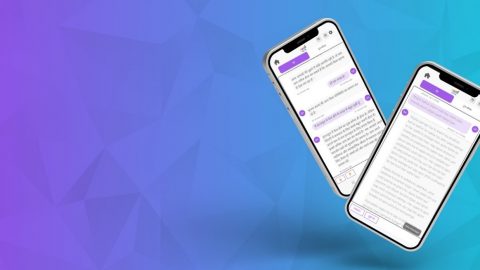Interview: Developing Accessible Applications for Windows Phone
The following blog post was written by David Dzumba – Accessibility program manager at Microsoft. He has worked in this area of the technology sector for more than 16 years.
—
In the earliest stages of development it is important to design an application for everyone, including those of us with limitations in vision, hearing, speech, dexterity, or cognition. By creating an accessible app, we ensure no one is excluded and reach a larger customer base.
While Windows Phone has a wealth of built-in accessibility features, adding new apps, such as the color-blindness helper or an ASL dictionary from the Windows Store, can help with everyday activities.
At Nokia, champion developer Randall Arnold has launched an app development venture for Windows Phone. So, I asked him a few questions on building accessible apps:
Why should developers care about developing accessible apps?
Randall Arnold: “If they don’t, their competitors will. In the end, everyone is expected to provide the same functionality, so delightful usability provides the edge.”
What steps should developers take to optimize the accessibility of an app?
“Use your own Apps! Under the worst conditions, I get the feeling many developers don’t use any of their own apps. In addition, enlist the aid of the most impatient, critical testers you can find. If you can engage them you can engage anyone.”
Any experiences (good or bad) you have had developing accessibility apps for Windows Phones?
“I’m really just starting with Windows Phone development, so not many experiences yet. But my thoughts are that development platforms tend to put functionality far, far ahead of accessibility. Visual Studio and even Qt Creator are friendlier than others, but can still be challenging. “
Do you have an example of an accessible app that has been successful? What made it successful?
“The Flashlight-X app. Clean and simple with a specific purpose. I really love the inclusion of a compass. I like the handy SOS icon too, although it could be a bit bigger.”
How do you test for accessibility in your apps?
“By placing myself in the shoes of people with physical challenges. Could I use this with one hand? If I were color blind? What about completely blind? Developers who put themselves in the position of their most challenged or challenging users will find they make usage easier for everyone.”
What suggestions do you have for new developers unfamiliar with the need for inclusive designs?
“Empathize with your customers. They are not users. They are people with needs, and maybe your app can fill a big one. Perform worst-case tests before publishing. Can your app be used by someone with physical challenges? In the dark? In full sunlight? In a storm? While performing other tasks? Dare testers to break your app. You’ll emerge from the experience with something truly robust.”
Arnold adds that app developers “tend to put less emphasis on the basics. But, the basic things make or break your app. If you can’t get them right, and keep them from encumbering your customer, you’ll be handing business to someone else.”
If you want more information about developing accessible apps for Windows Phones, please visit these websites:







